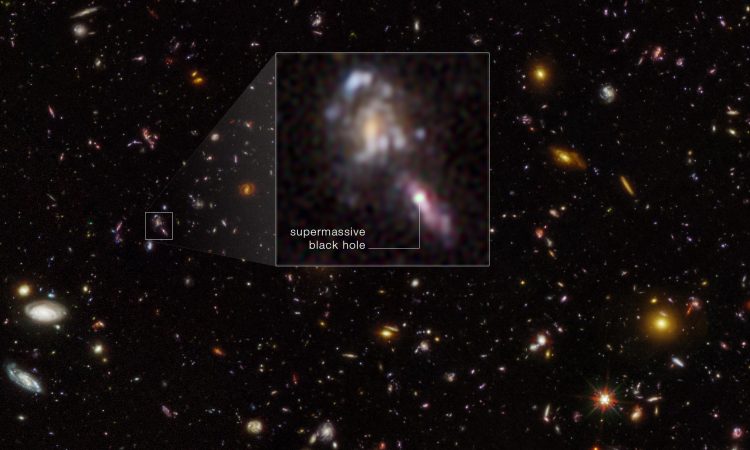
With the help of NASA’s Hubble Space Telescope, an international team of researchers has discovered more black holes in the early Universe than previously thought. The discovery may help scientists understand how supermassive black holes were created.
Currently, scientists do not fully understand how the first black holes formed shortly after the Big Bang. Supermassive black holes, which can weigh more than a billion Suns, are known to exist in.
“Many of these objects appear to be more massive than we originally thought they could be at such early times – they either formed already massive or grew extremely rapidly,” explained Alice Young, PhD student at Stockholm University and one of the authors of the study published in The Astrophysical Journal Letters.
Black holes play an important role in the life of galaxies
play an important role in the life cycle of galaxies, but there are major uncertainties in our understanding of how galaxies evolve. To get a complete picture of the connection between galaxy and black hole evolution, researchers used the Hubble Telescope to find out how many black holes existed in a population of faint galaxies when the Universe was only a few percent of its current age.
The initial observations were photographed again with the Hubble Telescope several years later. Thus, the research team was able to measure the variations in the brightness of the galaxies. These variations are a telltale sign of black holes. The team identified more black holes than had previously been found by other methods, according to .
Black holes formed by the collapse of massive, pure stars
The new observations suggest that some black holes were likely formed by the collapse of massive, pure stars during the first billion years of cosmic time. These types of stars can only exist at very early times in the Universe, because later generation stars are polluted by the remnants of stars that have already lived and died. Other alternatives for the formation of black holes include the collapse of gas clouds, mergers of stars into massive clusters, and “primordial” black holes that formed in the first few seconds. Now with this new information about the formation of black holes, researchers can build more accurate models of how galaxies form.
Astronomers are also taking observations with NASA’s James Webb Space Telescope to look for galactic black holes that formed shortly after the Big Bang to understand how massive they were and where they were.

